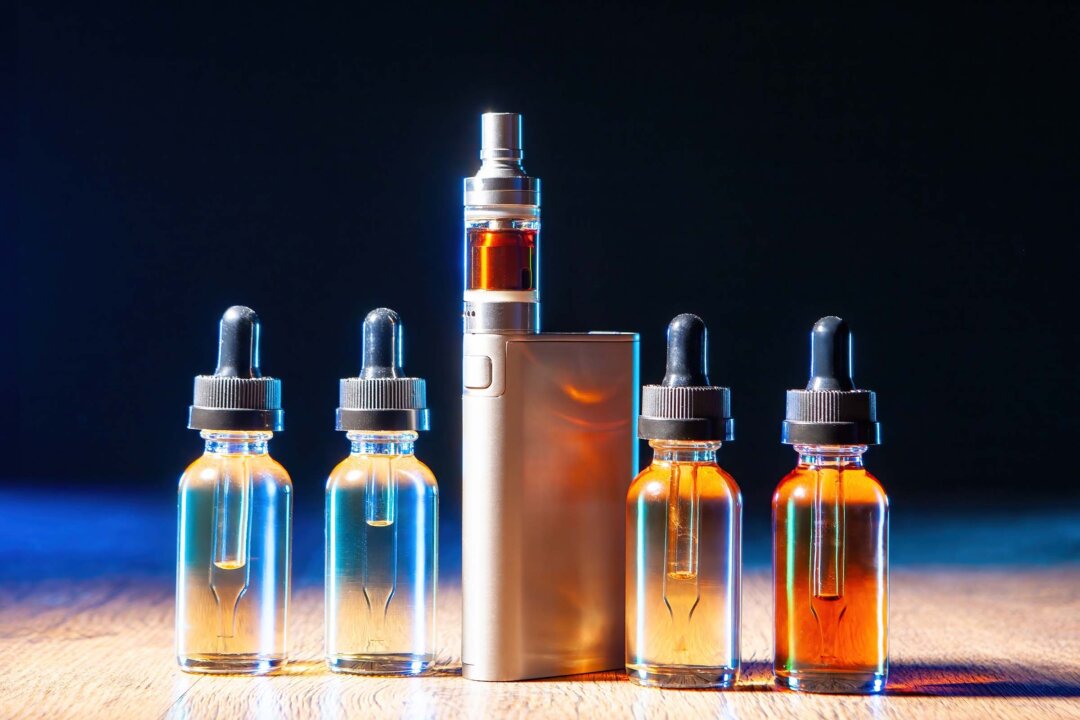Some e-cigarette companies are substituting nicotine with more potent, nicotine-mimicking chemicals that evade U.S. Food and Drug Administration (FDA) regulation, recent research shows.
Researchers at Duke and Yale University found that the amount of nicotine-mimicking chemicals, or nicotine analogs, in e-cigarette products may differ from what is on the label. Some product labels do not specify that they contain certain nicotine analogs, while some products contain fewer nicotine analogs than what is shown on the label. These nicotine analogs differ chemically from natural nicotine.

Animal studies suggest that some nicotine analogs can be more addictive and biologically harmful than standard nicotine. Federal laws prohibit the sale of nicotine-containing vaping products to those under 21. However, new nicotine analogs are not currently regulated by the FDA, and their health effects on humans remain unstudied.
“The discrepancy [between the label and the actual product] indicates that users are not receiving what they expect from these products,” co-author Sairam V. Jabba, a senior research scientist at the Duke University School of Medicine, told The Epoch Times. This inconsistency could mislead consumers, potentially jeopardizing their health.
Among the six e-cigarettes advertised to contain nicotinamide, some contained another nicotine analog despite its exclusion from the label, researchers found. The nicotine analog is 6-methylnicotine (6MN). The researchers also analyzed nine e-cigarette flavors sold under the brand name Spree Bar, an e-cigarette or vape marketed as containing 5 percent 6MN.
Jabba and colleagues found that the actual amount of the chemical was about 88 percent less than labeled. While this may be a good thing, Jabba explained that the significant difference between the marketing claims of 5 percent and the actual amount might indicate that manufacturers are intentionally trying to reduce potential health risks associated with the more potent nicotine analogs. Manufacturers may also be unwilling to diminish their marketing claims, which could make the product less enticing to consumers, Jabba said.
Many e-cigarette products are labeled as containing 5 percent to appeal to consumers, he said. Prior research has also indicated that flavored e-cigarettes containing nicotine analogs are preferred by youths and those who vape for the first time. In response to The Epoch Times’ questions about 6MN and its use in e-cigarette products, the FDA said, “The FDA is aware of companies reportedly manufacturing products that may contain compounds that mimic the effects of nicotine, but that are structurally or chemically different.
“Although more research is needed, some emerging data show these nicotine analogs may be more potent than nicotine—which is already highly addictive, can alter adolescent brain development and have long-term effects on youth’s attention, learning and memory.” Jabba said that he thinks the manufacturers are attempting to bypass FDA tobacco regulation through the use of unregulated nicotine mimics. He said that the FDA’s Center for Tobacco Products (CTP) is aware of these new chemicals and is evaluating their potential safety concerns and how they should be regulated.
The FDA said it is considering this issue from “an agency-wide perspective, and it will continue to use all available resources within its authority to protect the public, particularly America’s youth, from addictive products that may harm their health.” The Epoch Times requested information on Spree Bar’s product labeling from the makers but did not receive a response..



















